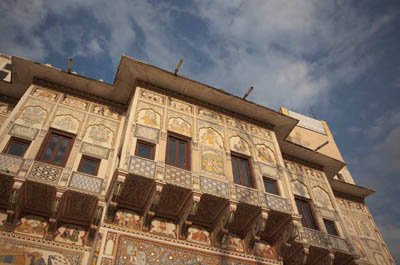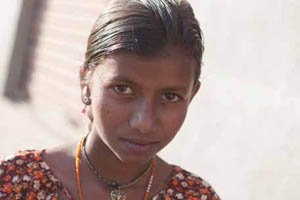articles/India/barryindia-page2
Barry in India - part 2 of 1 2 3
by Stuart Barry Published 01/06/2011

Well that took care of the backpack, but I still needed a bit more video gear. A lightweight Manfrotto tripod with a simple video head just fitted into my suitcase. I then had to decide: am I going to shoot everything locked down, with nice stable shots; and if so, can I take my tripod everywhere? The answer was no, so I squeezed in a Cambo DSLR rig. In pieces, it nicely shared the space with my socks and pants.
Luckily, everything went through airport security, and my slightly heavy rucksack was admitted as carry-on baggage.
Our tour went in a rough anti-clockwise circle from Delhi to Mandawa, Jaiselmer, Jodhpur, Udaipur, Shahpura, Ranthambore, Agra and back to Delhi. We covered cities, castles, forts, temples, countryside and desert in temperatures up to 35 degrees C. Along the way we stopped to look at anything that appeared interesting. Everyone had their favourite seat. Mine was, of course, the back two seats. Every day our luggage was loaded into the back of the bus, while I carried on board my rucksack plus the other bits now retrieved from my suitcase. Spread across the back of the bus I had the choice of all the equipment at my disposal and could grab what I wanted.

Combining video and stills is a compromise. Adding a holiday into the mix is a further complication. Where you would normally plan, take and re-take as necessary, you just have to take it as it comes. That means staying alert, making best use of sometimes less than optimum light and conditions, and looking for any opportunities as they arise.
A great example of this was in Jaiselmer. Our guide took us through the first city gate and was droning on about something, when I heard a commotion behind me. He said dismissively "oh, it's a wedding party going that way and a welcome going the other way". Well, never mind the splendours of the fort, I shot back down through the gate to start filming. If colour and sound are part of India they can be summed up in a wedding party and a welcome. Imagine that the circus is parading through the town and has bumped into a brass band. There are elephants, camels, and horses all dressed up. And there is general uproar as people dance and bang drums. Of course, I just dived into the middle of it all and started filming.
This threw up the first problem. Even at 100 ISO the largest aperture I could get with a shutter speed of less than 1/200 was about f6.3. I wanted to take advantage of shallow depth of field (DOF) and immediately thought of the matte box left at home that could house a neutral density (ND) filter. Too fast a shutter speed gives a slightly jerky video, but I took the risk and got away with it. For the accompanying stills the high shutter speed was an advantage. Just switching the dial achieved this quickly.
For our guided tours I soon established a good method of working with both video and stills. Indian heritage sites often do not allow the use of tripods and are very suspicious of commercial filming. For this you generally have to apply months in advance to Delhi. And Indian officials all have a PhD in advanced bureaucratic methods. So I quickly decided that a still camera on a DSLR rig would allow me to do both jobs. But I had to be a bit sneaky and casually slung the rig over one shoulder as I went in. My friend was not best pleased when he had to pay an entry fee of 400 Rupees to use his ancient Sony camcorder, while my £3,500 worth of HD gear passed as a still camera and attracted a fee of 100 Rupees (about £1.20).
Please Note:
There is more than one page for this Article.
You are currently on page 2 Contact Stuart Barry
1st Published 01/06/2011
last update 21/07/2022 08:49:43
More India Articles
The Society of Photographers Convention and Trade Show at The Novotel London West, Hammersmith ...
You have 11 days until The Society of Photographers Convention Wednesday 14th January 2026





